Mike Vardy's Blog, page 107
November 5, 2013
The NOW Year is Now Here
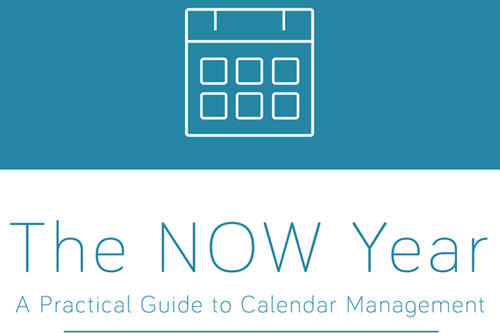
NOW is the time.
The NOW Year: A Practical Guide to Calendar Management has just been released and is available at the Productivityist Store.
The initial release is in PDF format only, with future updates to include EPUB and Kindle formats. So if you have already bought it or plan to buy it, rest assured you will get those formats included in all future updates. (And who knows – I may even have an iBooks version in the works...)
Over the remainder of this month I am going to post some of The NOW Year Interviews here – and these ones are not included in the bonus materials that went to those who pre-ordered nor the interview links included within the pages of the guide itself.
And just like with The Productivityist Workbook, I'll be keeping a living document of Calendar Management Tools here at Productivityist. So even if your favourite calendar management solutions aren't mentioned in the initial version of The NOW Year, they may appear there – or in future iterations of the guide.
Those who pre-ordered will have received their download links already (or will be shortly). Those of you that haven't ordered it can head to the shop and get one now.






 Related StoriesTrick and Treat: The New 1Password Emergency KitProductivity as a ProcessIt's Time to Pre-Order The NOW Year
Related StoriesTrick and Treat: The New 1Password Emergency KitProductivity as a ProcessIt's Time to Pre-Order The NOW Year
November 4, 2013
The Build A Better Workflow Series: Apps and Services
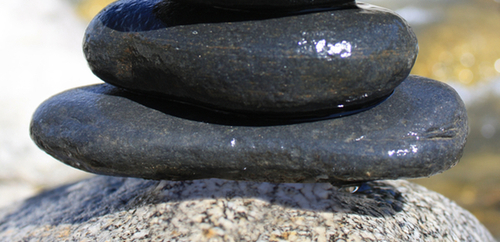
Over the month of November I'll be writing a weekly post as part of a series I'm dubbing Build A Better Workflow. The first installment is going to focus on apps and services you can add to the equation to help you make a workflow that is better for you.
I talked about a lot of apps during my creativeLIVE course last week. I decided to assemble some information on some of them in a piece here today so that the overwhelm of "app overload" would be lessened just a little bit.
I also wanted to make sure I put the ones here that I've found to be the most useful for me to date. There are many others I touched on during my talk, but these ones have stuck with me over a longer period of time, so they deserve to have the spotlight more than others.
Hazel has been a big one for me as it acts as an automation tool more than anything else in my workflow. I've only scratched the surface with the rules that can be created and implemented with the app — David Sparks has gone far deeper than most on this front. While it may not be the first app that you'll want to add to your workflow, it'll be one to keep at top of mind for addition not too long after your system is established and firmly entrenched in your mind.
In terms of automation, IFTTT and Zapier are great services that you can use to automate tasks that you don't really need (or want) to do on your own. Definitely worth exploring and slowly integrating over time.
There are a lot of "habit" apps, but the ones I discussed most were Lift, Way of Life, My Minutes, and Clever Routines. If these kind of apps are something you'll use to not only augment your system but will actually help you stick with it, then give them a look.
TextExpander has been such a huge efficiency and effectiveness booster for me. It works in the background for me and adds so much value to my workflow -- and my work as a result. I'd add this – or its Windows counterpart Breevy — to your toolbox sooner rather than later.
Asana is what I use for team-based task management. OmniFocus is my solo task management app of choice. There are many others out there, but I keep coming back to these. If you don't have a task manager of choice yet and you work with teams and individually, then Asana and Flow are ones you should check out first. And if you've already got OmniFocus and don't feel as if it's working for you, try checking out OmniFocus Premium Posts and/or Creating Flow with OmniFocus. They are great resources for OmniFocus users of all skill and proficiency levels.
Evernote is a huge asset for me -- but it wasn't always that way. Once I set it up to work for me, it clicked. Before that, it was a mess. Evernote Essentials was a big help, but so was just stepping back and giving Evernote purpose. If you've already got an Evernote account, then try that. Add value to it, and it will add value right back.
My mail app of choice is Dispatch on iOS -- and it is the app I use to process most of my emails. Why? Because I can get the emails in my email inbox where they really need to be quickly and effectively. If you're an iPhone user, give it a look. It has saved me a ton of time and energy since I started using it as my primary email app.
One app that I didn't mention, but was a huge help in getting me up and at 'em in the mornings of my talk was Sleep Cycle. I'll offer up more thoughts on this in a future post, but if you don't have an alarm clock app right now then you should check it out.
And of course, I've listed a slew of others over at individual living resource pages that are also offered in The Productivityist Workbook.
Task Management
Time Management
Email Management
Idea Management
There's a lot out there, and there's nothing wrong with exploring to find what will work for you. It's when that exploring becomes searching that you may wind up going off in a direction that is unfocused and far removed from why you were exploring in the first place. Hopefully what I've offered here will help you search less...and do more.
Photo credit: satty4u via SXC.HU






 Related StoriesHow I Built My creativeLIVE Course in EvernoteTrick and Treat: The New 1Password Emergency KitA Look at Task Management Tools for Teams
Related StoriesHow I Built My creativeLIVE Course in EvernoteTrick and Treat: The New 1Password Emergency KitA Look at Task Management Tools for Teams
November 1, 2013
How I Built My creativeLIVE Course in Evernote
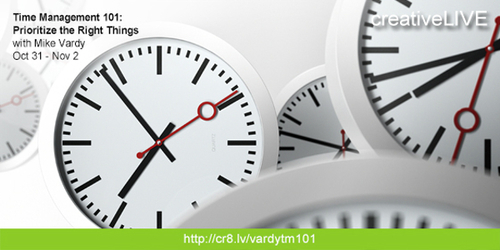
Today marks the midway point of my creativeLIVE course – Time Management 101: Prioritize the Right Things – and while I'm not going to be able to share every aspect of the course with you here I can share with you something very practical. I'm going to share with you how I built my creativeLIVE course in one of my workflow apps of choice...Evernote.
It'll be easier to discuss what I didn't use in the creation of this course first. I had considered using Evernote's new Presentation Mode, which is only available on the Mac for Evernote Premium members. However, I decided against it because I was far more comfortable using Keynote for this project. I do like the pointer options built into this new feature, but for this use case I went with the known over the unknown.
(I'd be remiss if I didn't give Brett Kelly a shoutut here. Not only have I quoted him during Day One of my creativeLIVE course – his "future dumb you" bit – but his book Evernote Essentials has helped me wrap my head around Evernote far better than I could have on my own.)
I'm a big fan of outlining on paper, and when building this course my Evernote Smart Notebook came in handy. I used it a lot in the planning stages, and then simply use my iPhone app to scan the pages of the custom Moleskine into Evernote to make them more effective for later use. This is the first time I've used this notebook without the idea that I was "ruining it" with unnecessary captured items, so if you're into mapping out a project or idea on paper first, the Evernote Smart Notebook can be a valuable asset.
Every email that came my way regarding the course that was not a task got stored in a notebook that I placed in my "Professional" notebook stack. I tend to use a lot of notebooks and organize them into stacks where appropriate. The creativeLIVE course notebook was solely used for the building of this particular course. If I'm asked to do another one down the road (say, Time Management 201), then I'd create an entirely new notebook for that . Again, only communication with reference items appeared in Evernote. Tasks associated with this project were stored and dealt with in OmniFocus.1
Attachments that were in Evernote (like the course outline) were easily updated in Pages and then synced back to Evernote, meaning that the document was always current in that app. This is key if you're sharing an ongoing document and you don't want to send updates back and forth.
The Evernote Web Clipper was another great tool. I used it to gather research, and simply selected the appropriate notebook when clipping stuff. I also tagged as I clipped (which is essentially capturing), which allowed for better filtering and added some context to anything I was gathering.
Finally, I used audio notes to help rehearse certain points in each section of the course. Certainly, my slidedeck offered triggers to assist me in keeping on point along the way, but the act of recording audio snippets in specific notes so that I could capture some of the really good soundbites I'm offering was a huge help.
Evernote is great in that it is one of those services that offers ubiquity, simplicity, and scalability. Not many services or apps can do that. Evernote can be a great way to manage ideas, bring projects to life, or deliver your expertise to a ton of people. You just have to take the time to set it up for yourself so you can make those things happen as frictionlessly -- and effectively as possible.
1 Although Asana would be useful here as well, especially for team-oriented presentations. For example, Craig Jarrow, Marc and Angel, and I are using Asana to manage the SXSW Interactive panel we’re doing this coming March.






 Related StoriesTrick and Treat: The New 1Password Emergency KitA Look at Task Management Tools for TeamsWhy You Need to Get to Know Tags
Related StoriesTrick and Treat: The New 1Password Emergency KitA Look at Task Management Tools for TeamsWhy You Need to Get to Know Tags
October 31, 2013
Trick and Treat: The New 1Password Emergency Kit
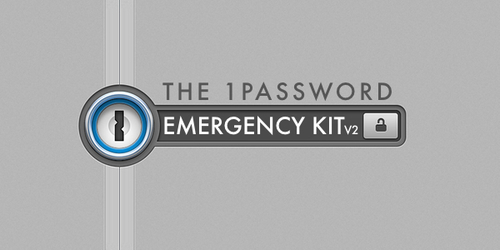
It's Halloween, so I figured that I'd offer you both a trick and a treat today with the release of an updated version of my popular 1Password Emergency Kit.
Now if you're not using 1Password already, you should be (check out my review for the new Mac version here). Not only does it keep your passwords safe, secure, and accessible to you -- it keeps them current as well. And that's a huge benefit not only for your own efficiency and effectiveness, but for those you trust who may need access to your passwords should something happen to you.
Clearly this isn't something we plan for, but it can happen. So why not prepare accordingly? With 1Password there to help you with password security and retention, you'll be able to help ease even a little bit of the stress and pain that comes with any sort of emergency that might incapacitate you. This kit -- which is now two full pages -- allows you to print off the information that will be required in the instance that you are not able to offer that information yourself. Whatever kind of thing you classify as an emergency, with 1Password and The 1 Password Emergency Kit prepared you'll have done your due diligence.
Why have I updated the kit? Well, 1Password for Mac and 1Password for iOS have undergone some big changes since I originally published the first version, so it was time. In this version, I've added a section that allows you to fill in any shared vault information you have, I've altered some of the categories that were initially used, added checkboxes to the PDF (sorry, plain text folks), and finally inserted a spot to put device credentials at the top. At some point i'll make it look even prettier, but the idea is to get it out there for as many people to use as possible so that if something does happen, you're ready.
And remember, the team at 1Password doesn't know your passwords. Only you and the database do. You know your "one password", and if you're not able to recall it (or if you're not available to recall it for someone), there will be a lot of resetting passwords going on instead of focusing on other important matters.
Since we spend so much of our lives online, having a failsafe in place is more than wise...it's essential. Using this document will give you and those you trust in case of an emergency the peace of mind of knowing that they have every single password-based account you possess, as well as any other personal information you've kept in 1Password (such as software licenses and secure notes).
So download the new 1Password Emergency Kit below (either the Plain Text or PDF version), fill it out, and then store it in a safe, secure place. Someplace where your other emergency documents are kept -- like your will. Filling in your 1Password Emergency Kit will take very little time, but the amount of time it will save will be huge.
Download The 1Password Emergency Kit V2.0 (PDF)
Download The 1Password Emergency Kit V2.0 (Plain Text)
Thanks for checking out (and hopefully downloading) The 1Password Emergency Kit. While I hope you never have to use it, it is a great little tool to have in the event of an emergency.






 Related StoriesA Look at Task Management Tools for TeamsProductivity as a ProcessA Look at Less Meeting
Related StoriesA Look at Task Management Tools for TeamsProductivity as a ProcessA Look at Less Meeting
October 30, 2013
A Look at Task Management Tools for Teams
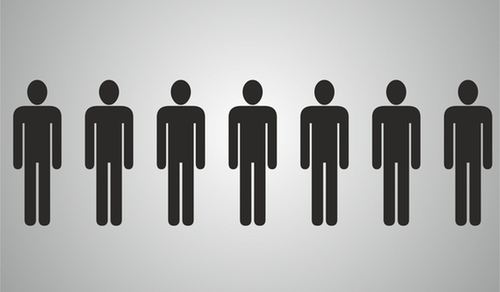
A couple of weeks back I spoke to a local contingent of budding "productivityists" about team task management at Q College. During my creativeLIVE workshop later this week, I'll be doing it again. But before I do that, I thought I'd offer Productivityist readers a closer look at some of the team task management solutions I've explored over the years.
Asana
No matter how many other teem task management apps I try, I keep coming back to Asana. It's under active development, has plenty of integrations with other apps and services (Dropbox, Google Drive, Harvest), and is free for teams of 15 or less. With all of those features at no cost, and a usability that can be as simple as you want or can scale to as much as you need, Asana is tough to beat.
I'm a big fan of the colour-coding options they e added to projects, and the ability to create a master template of sorts for projects you plan on repeating regularly. Google Calendar integration is a nice touch for those who insist on having milestones and due dates in their calendars, and the ability to print off task sheets and more makes Asana a real heavyweight I the team task management space.
In fact, they've gone beyond being a heavyweight in that space. They're taking the teamwork space by storm. And that's a good thing.
Flow
I really do love using Flow. The us interface is beautiful and the mobile app is stellar. The clipper is the best of the bunch here (in terms of pure task management -- Evernote's clipper is fantastic as well, but isn't ideal for tasks), and the recent redesign makes it more accessible than ever. The only drawback with Flow is the price.
They've shifted their pricing model somewhat to accompany the new design, but when you've got an app like Asana that is free for small to medium-sized teams, you've got an uphill battle on your hands. That said, when you don't pay for a service you need to realize that there's a cost to that somewhere. I'm not saying that free apps are doing anything nefarious (I use the free version of Asana, for example), but I am saying that the team at MetaLab -- the folks behind Flow -- have paying customers that have every right to expect greet service for their money. And Flow offers that in spades.
Trello
If you're a very visual person, then Trello is worth a look. Sporting a shiny new iPad app to augment the overall experience, Trello uses boards to map out projects and uses visual cues to assist efficiency and effectiveness. Cards are what makes Trello move things forward, and you can store a lot of information on them -- on the front and back.
I've not spent as much time in Trello as others, but since I'm a very visual person I'm going to use it for a few projects to see what works for me and what doesn't. Trello is used by a lot of reputable people and brands, and I'm going to see if I can make it work for me as well. Stay tuned...
Evernote
What? Evernote as a task manager -- never mind a team task manager?! Surely I jest. 1 But there are some elements of Evernote that make it a valuable addition to a team managing projects and tasks across the miles (or even the next cubicle over). Shared notebooks is one element, and it's a great way to introduce Evernote users on your team into a team task management solution. With the ability to mail task to Evernote, you can simply share a notebook and go from there if you want. It's a rather cobbled together solution in that sense, but it is workable.
Other apps and services worth exploring include the following:
Mindjet: I do like Mindjet, although it is too pricey for many people. The mobile app is one of the best I've seen. I've written more about Mindjet over at iPhone Hacks.
Kona: A fairly new player on the block, Kona offers a unique user interface and its dashboard is something that sets it apart. You can get everything pertinent in an "all-in-one" glance, which is a handy feature.
Goodwerp: I've not looked at Goodwerp much yet, but I like what I've seen in terms of its look. And I'm a big believer that in order for you to want to use something regularly, you're going to want it to be pleasurable to look at.
Action Method Online: I like it and still can use it, but if you don't have a current membership for it then you're out of luck. Behance has closed it off for new members. too bad, because it was a great tool for creatives. The "backburner" area it employs is a great feature. (Goodwerp seems like a great place to look if you're a creative team or individual.)
Many of these apps are also useful as task management solutions for individuals, which is ideal for those just getting into using an app or service for that purpose. That way you don't have one for your own personal tasks and one you deal with when working with teams. I've found the best ones for this are Asana and Flow, although Evernote is also worth considering in that it allows for occasional sharing through notebooks (if that is all you plan on sharing with team members).
Whether your goal is to streamline communication among teams or improve overall team effectiveness, many of these tools will move you closer to either...or both. The key is to get familiar with one of them. Get really familiar.
Then simplify where you want, scale where you need, and move yourself forward in the process.
Photo credit: jayofboy via SXC.HU
1 Although Daniel Gold would tell all of us otherwise.






 Related StoriesA Look at Less MeetingHow My 8 Year Old Daughter Uses EvernoteReview: 1Password 4 for Mac
Related StoriesA Look at Less MeetingHow My 8 Year Old Daughter Uses EvernoteReview: 1Password 4 for Mac
October 29, 2013
The Real Magic: Living The Ideal Week
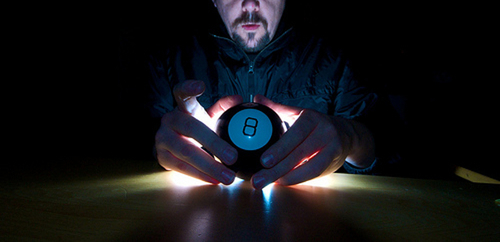
I'm busy in travel mode for creativeLIVE today. So, I've got another guest post lined up for your reading pleasure. Paul Smith is a writer. He’s very interested in relationships, psychology, and traveling. You can find Paul on Google+ and on
AskEssay
There are lots of tools and activities about self-development that are worth doing. If you are interested in improving yourself and making your life better, you probably can name several yourself almost immediately. But all those little changes mostly concern one or several spheres of your life. How about improving all aspects of life and turning it into something you always wanted it to be?
It’s possible...and it’s easier that you think.
What's more is that you won’t need any planners, sophisticated tools, or a personal coach. What you will need is a pen and a notebook (or a text file on your computer) and the understanding of what exactly you want.
The problem is most of us don’t live for today. We don’t know (or refuse to realize) that what we do – or don’t do – today is the base of our tomorrow. So many of us are daydreaming about a happy tomorrow. But the harsh reality is that tomorrow will never come if you don’t live for today and don’t do your best for your own satisfaction and happiness.
Tomorrow is our fix – our solution for all of today’s problems. "I’ll start exercising tomorrow, because today I’m too tired", "I’ll start saving when I’m promoted", "I’m going to diet since Monday" – and the list goes on.
How long are you going to cheat yourself?
It’s high time you become more organized and responsible for your own life. And there are some steps you can take to do just that.
On Sunday evening, take a pen and paper and write down how you want to live the next week. We all have a lot of plans that are often postponed, but this time around don’t postpone anything. Always wanted to take on yoga? Write it down. Enjoy walking in the nearest park in the evening? Reserve some time for it. Your task is to plan your days not as a set of necessary actions like ‘buy milk’ or ‘pick up son from school’, but to plan the day for the life you've always wanted to live. It’s not a work of fiction, so don’t plan a three-day trip to Paris if you don’t have the real opportunity to realize it. But if you've wanted to join that acting course or visit your relatives for a long time, then these are the things to do.
Now it’s time for the most important part of this plan: Live a week following this plan. This requires your discipline and organization, but you have the strongest motivation in that you realize that it’s your life and you want to make it better.
The usefulness of living at least a week in this tempo is incredible. When you choose to do what you really want to do and make your days full of action, you become more postitive and confident. You get a marvellous feeling that your life is in your hands. You will stop being frustrated about the lack of time and opportunity to do something. And moreover, you can switch on the real magic.
And if you continue living like this, one day you’re bound to wake up and realize that your life is exactly what you wanted it to be.
Photo credit: Len Penzo via Len Penzo dot Com






 Related StoriesProductivity and The PingWhy Productivity is a Matter of Life and Death for MeChasing Rainbows
Related StoriesProductivity and The PingWhy Productivity is a Matter of Life and Death for MeChasing Rainbows
October 28, 2013
Productivity as a Process
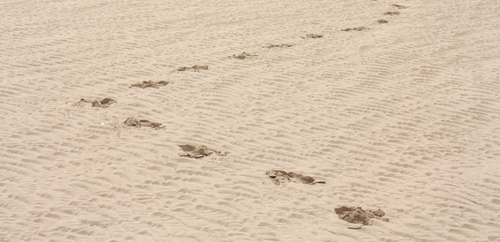
This is a guest post by David Wyndham. David is President and co-owner of Conklin & de Decker, an aviation data and consulting firm in Orleans, Massachusetts. He is married to the woman of his dreams for almost 30 years, and owns two dogs: Briards. David and his wife compete in Agility with them and they are regulars at his work. You can follow David on Twitter as @djwyn.
I am a part owner of a small aviation consulting firm. As such, I'm managing workflows for my roles as an owner, marketing manager, aviation blogger, product development and tech nerd, consultant with multiple clients, and dog walker. The dogs are the only ones who let me know what I need to do and when. Many a time I've struggled with trying to remember when, what, and for whom as my email piled up. The brain is not designed to be a task manager, so I looked for something better. Initially, that led me to a guy named Merlin Mann, his site 43 Folders, and his treatise Inbox Zero.
That led me to Getting Things Done by David Allen. That was (and still is) a game-changer for me. Collect, Process, Organize, Review and Do.
I'm a heavy computer user, switching over to the Mac and iOS about four years ago. So I set out to find the "perfect tool" for GTD and the Mac-iOS system.
But I made the mistake of making productivity a goal.
I probably have tried a dozen to-do list managers in depth, and another dozen downloaded and discarded after a few minutes. Web-based, Mac, iOS and the like. Paper and pen never worked for me, even with a gorgeous Mont Blanc and Moleskine. After a few years with the "Productivity Tool of the Week" I figured out an (obvious) secret of productivity. It is a process and not a goal. A good productivity system is one that lets you get to "Do" as frictionless as possible.
For the past year I have settled on my tools of choice. They meet all my needs and many of my wants. I almost always have an iOS device handy. It needs to sync with my Mac at work and at home. I need to mange anywhere from 10 to 20 projects ranging from three steps to fifty. So now, I'm working to master the tools that I have rather than scanning the Internet for the next colorful to-do app.
As a result of GTD, I am feeling more freedom to think about what is next and what I want to do. I make the time for a weekly review and mini daily reviews to scan all that I have going on or coming up. Along the way, I added a layer on top of GTD, Agile Results. I use its Three Important Things for today, this week, this month, along with its Monthly Sprints to help me focus.
The biggest problem I have is in developing and reviewing the long term view, the 40,000 and 50,000 foot views in GTD. Those are the "what is my outer purpose in this world" views. Ideally, what I do should support that purpose, or at least not interfere with it. Some parts are easy to figure out: wanting to be the wonderful husband and friend my wife deserves. But things like how do I best contribute to my community and my career still need refinement. That is where I want to use the time being productive can afford me: the time to be still and think about the big picture knowing that everything else will still be where I can get back to it.
I enjoy podcasts and make "productive" listening time for Mikes on Mics, Enough, and still hang with Merlin Mann and Dan Benjamin on Back to Work. These are all found on 5by5.tv and worth my very limited time. These help me not to pick out the next app, but to help me focus on the question of whether what I am doing right now is really what I want to be doing right now.
Biggest lesson learned: It is a process, its about doing the right things, the effective things. It's not about the hot new toy/app/book. But be kind to yourself and keep at it. I have a lot still to learn, but feel like I'm on a path I can feel good about.
Photo credit: ColinBroug via SXC.HUp






 Related StoriesIt's Time to Pre-Order The NOW YearSaying Things Done: A Quick Look at Capturing Tasks Through VoiceWinding Down the Week
Related StoriesIt's Time to Pre-Order The NOW YearSaying Things Done: A Quick Look at Capturing Tasks Through VoiceWinding Down the Week
October 25, 2013
Why You Need to Get to Know Tags
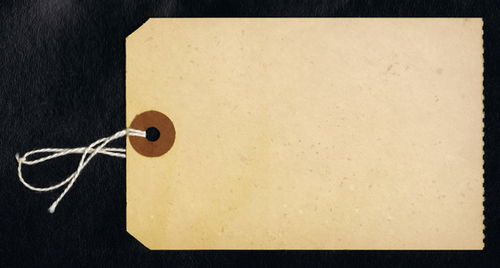
I originally wrote this piece for Steve Dotto's newsletter prior to the release of OS X 10.9 Mavericks. Steve is going to be delivering a repeat session of his popular webinar, 3 Steps to Inbox Zero, on Tuesday October 29th. You can check out all of the details here, and if you decide to attend then tell him Mike sent you. :-)
OS X Mavericks now features the use of "tags" within the entire operating system. Tags have long been used within apps -- especially task management applications like Asana -- to help with searching and to add context to action items. With Evernote and several email apps also using tags extensively, those who've spent some time using apps that incorporate tags have had the ability to use them in a way that makes their workflow more efficient and effective.
Now that Apple is including tags as an integral part of their operating system, it's only a matter of time before they go from being something that are used by power users to being used in a more mainstream way. And it's about time that happened.
Why?
Because adding tags (or "tagging") tasks, projects, and (now) OS X files can really boost your productivity when used properly. Keep in mind they can be used to identify items that are based on location (home, office, project) or for things as unconventional as energy levels, emotions, or days of the week.1
The best part about tags is that their use can be subjective, which is great as it allows for users to find their own ways of making them effective. The key is to use them in some way in order to make searching for things easier and to align similar items up with others that pertain to certain locations, projects, days of the week, and so on.
By the way, I consider tagging to be so important that you can expect more written about them here – and in my other work – now that they are becoming more mainstream. I'm also going to talk a great deal about tagging during my upcoming three-day workshop for creativeLIVE.
Tags may not be widely used yet, but they are becoming more fashionable. It's time for you to get ahead of the curve and familiarize yourself with tags now. Your "future you" will thank you for it.2
Photo credit: ba1969 via SXC.HU
1 By the way, tags often act as contexts (a la David Allen's GTD) in a lot of these apps. So keep that in mind too.
2 Hat tip to Mr. Brett Kelly for that phrase.






 Related StoriesThe Easy ButtonHow to Create a Simple AwayFind SetupTest Patterns
Related StoriesThe Easy ButtonHow to Create a Simple AwayFind SetupTest Patterns
October 24, 2013
A Look at Less Meeting
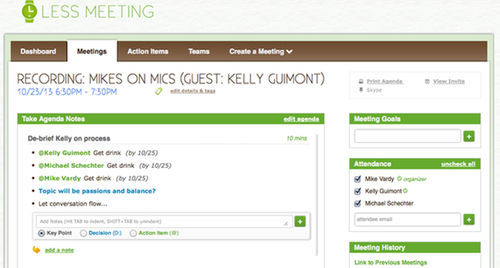
I'm not a fan of meetings. I know they're essential, but they often become big time-wasters for everyone involved.
I am, however, a big fan of apps that do one thing really well, and especially apps that do that and can scale up or down in the process.
Less Meeting has helped me deal with meetings more effectively and efficiently -- and it scales in a way that allows people to slowly adopt it without feeling overwhelmed.
The service acts as a one-stop shop for all of your meeting needs. You can schedule meetings through Less Meeting (although I generally use Doodle for that) and share meeting minutes both on the fly and after meetings. Tagging is supported -- which is great for those of us who use them in other apps like Evernote (as well as the new Mcc operating system Mavericks -- and want uniformity.
Whether you want to assign actions to attendees, mark decisions made, or simply list key points, Less Meeting gives you that option. You can set an genda to cover certain topics over a period of time -- and if your meeting runs long or a segment does, the time progress bar will indicate that. Essentially, Less Meeting does an excellent job of doing much more than just setting up a meeting destination. It helps you execute those meetings in an effective and efficient manner.
Now not everyone I've had (or will have) meetings with will want to use Less Meeting -- I'm well aware of that. Many folks like to use another app for that, like Evernote, Google Drive, or even just a local document. There is a learning curve, but like any other app or service that's worth using it's got a decent benefit that goes along with curve. Less Meeting is designed for meetings – as well as actions surrounding those meetings – so it's definitely a "one thing well" sort of service. And it does its one thing very well.
If you're looking at a way to streamline your meetings – if only for yourself – then give Less Meeting a good look. I'm only starting to scratch the surface of what it can do...and I'm liking what I'm seeing so far.1
1 For a bit of a deeper dive, my friends Craig Jarrow (Time Management Ninja) and Steve Dotto (DottoTech) offer more comprehensive pieces on Less Meeting.






 Related StoriesReview: 1Password 4 for MacA Look at Evernote Essentials 4.0Review: Die Empty by Todd Henry
Related StoriesReview: 1Password 4 for MacA Look at Evernote Essentials 4.0Review: Die Empty by Todd Henry
October 23, 2013
Productivity and The Ping

Travis is a consultant--he examines how why people in organizations aren't working well, and discovers solutions to get them working together and better. By day he's a Commissioned Officer in the US Coast Guard. By night you can find him building his message at Bit Thinking.
"The Ping is that little sensation that occasionally prompts me (you) to check my e-mail or my social media accounts." --Todd Henry, The Accidental Creative
The Ping is insidious. It's everywhere – in our new iPhone, in our tablet, in our email. At work we cringe at people who always have a screen continuously monitoring their inbox.Where do they find time for their own great work if they're spending the entire day following someone else's priorities?
The Ping consumes our life – and while some of it is imposed from external demands, most demands are internal. Take a look at how many social media accounts are in your device of choice. How many hours do you spend playing games or watching TV? How many ways can someone get in contact with you?
Maybe Evernote was right in not having any office phone numbers!
Without realizing it we've created an environment where the Ping flourishes. And we can't be productive when we're always waiting for that sound, vibration, or flash. Those small moments take away our days. Our greatness comes in how we act in the smallest moments.
But those moments have to be of our own choosing.
When they're someone else's choosing they're not great. They're routine. They're someone else's priorities. That's what the Ping means. It means someone else needs something from us. Our challenge is to convert the frenzy of the Ping to the focus of our productivity.
"Take the time to create space for yourself and you’ll create the space to make time for yourself." – Mike Vardy, The Way of The Productivityist Manifesto
This is what drew me here – the Ping and the willingness to break away from its gravity. That's what resonated with me when I read The Front Nine (especially Mike's totem and respect for the Green Lantern). Willpower is great, and it's immensely successful for him. But will doesn't work for me. Having a strong external locus of control, I'm more easily led by my environment. It's why my workday slowly descends from leaving at 1600 to leaving at 1800. I'm not more productive...I'm just more susceptible to the Ping.
I use two other powers for my advantage: Rage and Hope.
The Red Lanterns are blinded and driven by rage. I like to say anger, but it's really rage. Red Lanterns are just living wrecking balls. (But hey, they're driven!) That's the potential power of the environment around us: to drive us towards being who we want to be in the world. Some people become great because of what's within them. Others become great because of what's around them.
There's also a sense of rage in myself. When I look at my Five Minute Journal and I see what I've left undone, I get a little upset. (Actually, I get pretty pissed off.) Because each time I shift a daily goal back I've given ground to someone else's agenda. I've mortgaged my future for mediocrity. And we don't have much time in our lives to let that happen.
On the other hand, Blue Lanterns are guided by hope. Hope in the future. Hope in everything to being better and becoming better. Hope is gratitude – it's finding things to be joyous for in our lives and building upon them. Wherever there is space for us to already be great--we take that space and expand.
Hope and rage together remind me of the Stockdale Paradox, which applies because of how we're crushed by the week and carried through the weekends. As reflected in this quote from Admiral James Stockdale in Good to Great by Jim Collins :
"You must never confuse faith that you will prevail in the end—which you can never afford to lose—with the discipline to confront the most brutal facts of your current reality, whatever they might be."
So how does this relate to the Ping?
As we become more connected, we also have a diametric need to be disconnected. As we grow more entrenched in our chairs (and yes, sitting causes cancer), we have to stay mobile and energetic to keep us renewed. As much as I hope to be better I know I need to go through a lot to be there.
That's the heart of productivity for me – hoping through my goals to ship more, but also having the anger and rage to fuel me to keep moving forward. Any day where I don't move forward is a day where I fall behind. Do that too many times...and the Ping wins.
How do you beat back the Ping?
Photo credit: parsley via SXC.HU






 Related StoriesWhy Productivity is a Matter of Life and Death for MeChasing RainbowsBring The Noise
Related StoriesWhy Productivity is a Matter of Life and Death for MeChasing RainbowsBring The Noise



